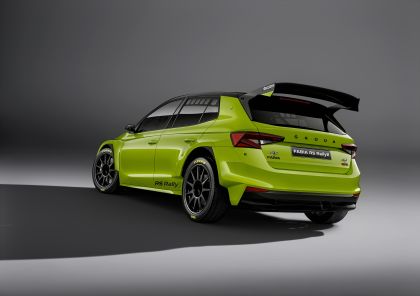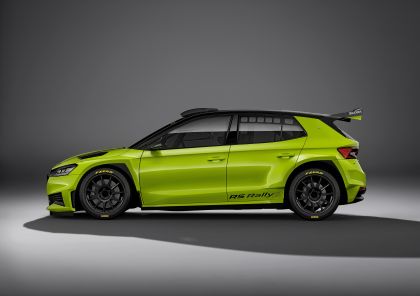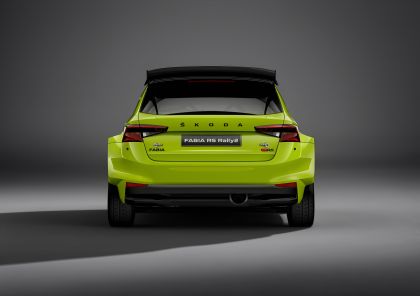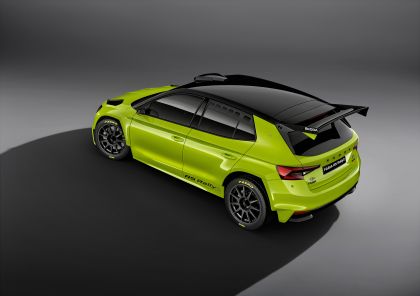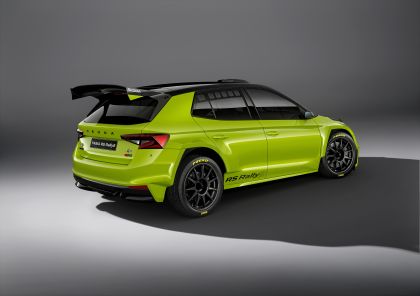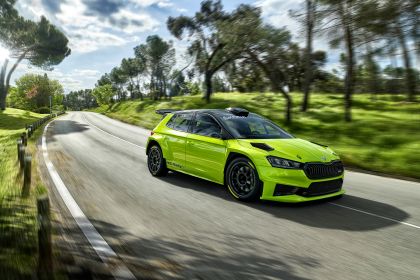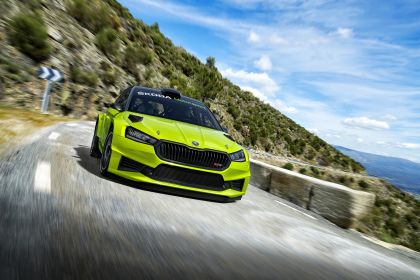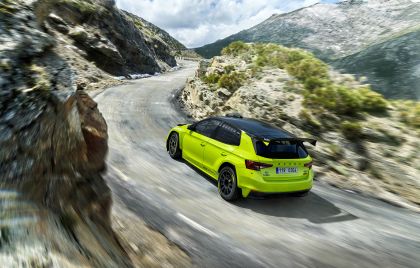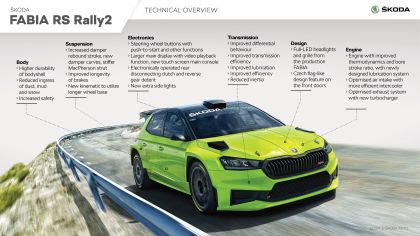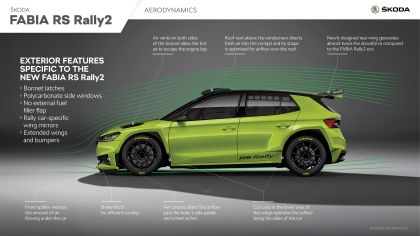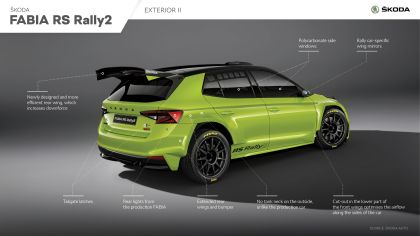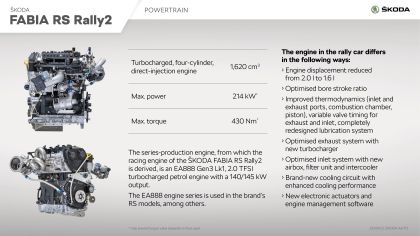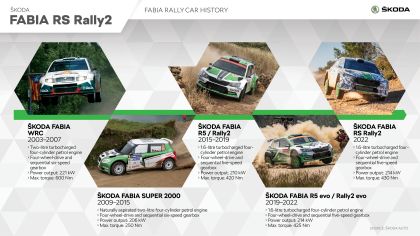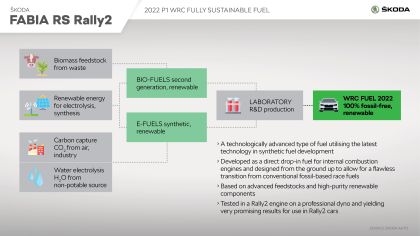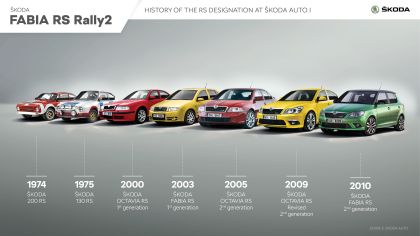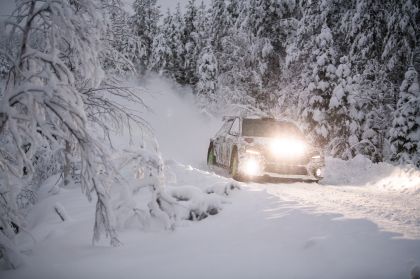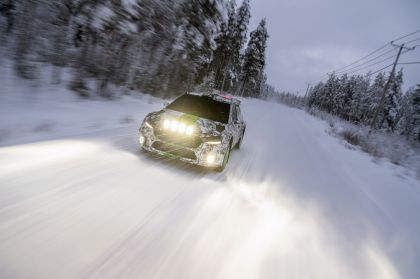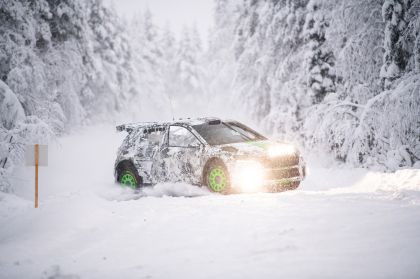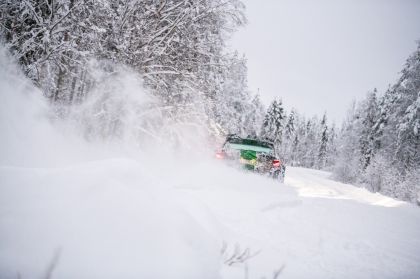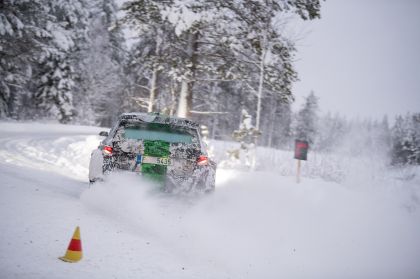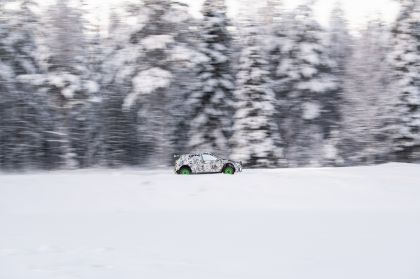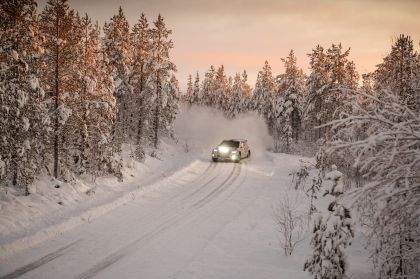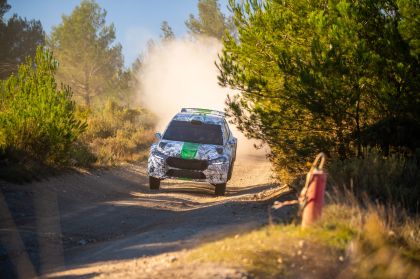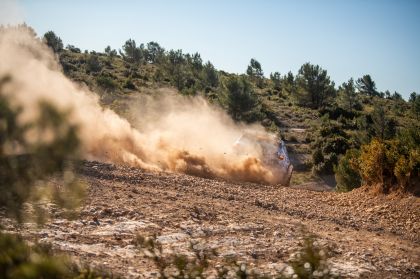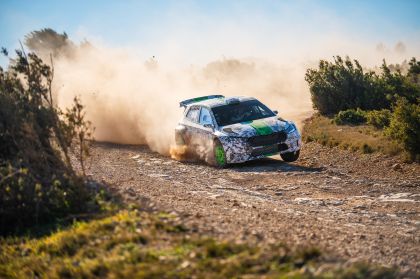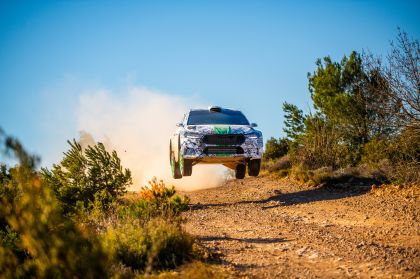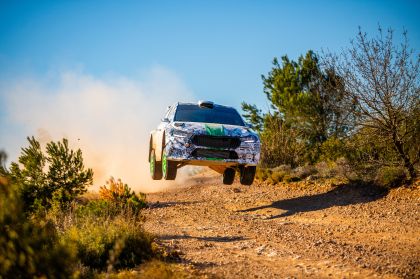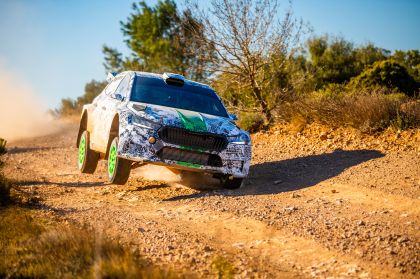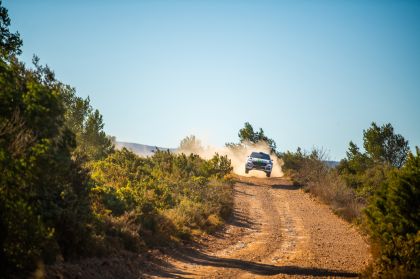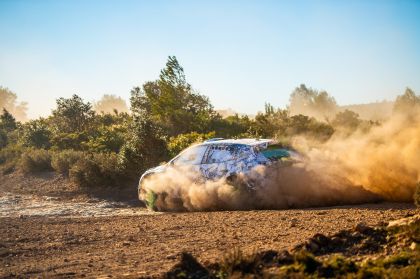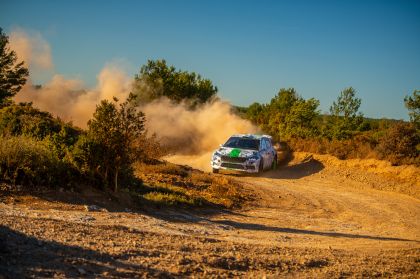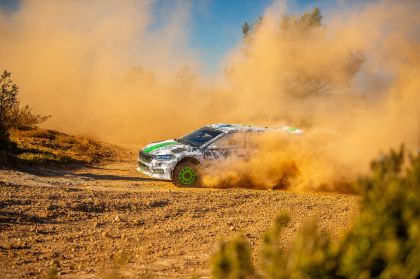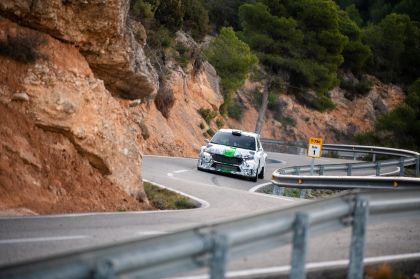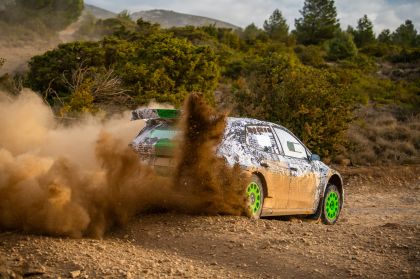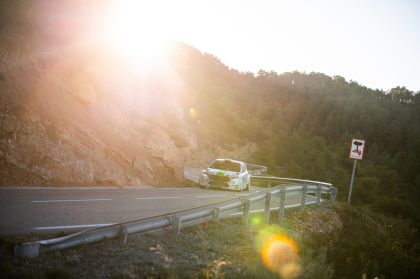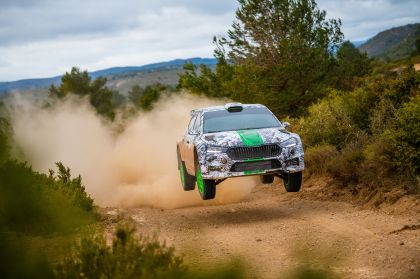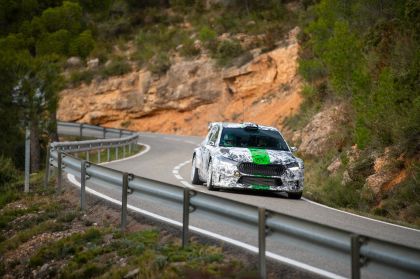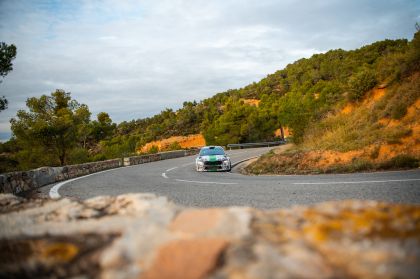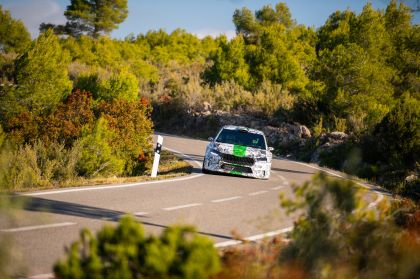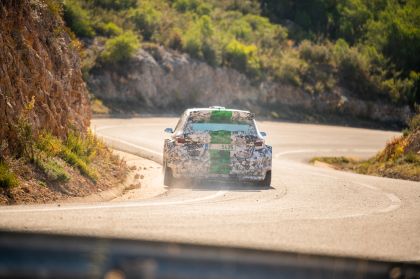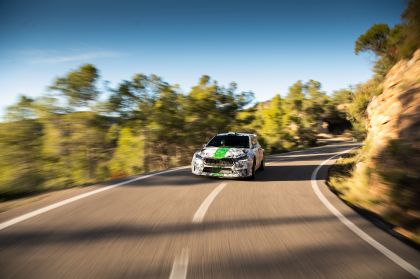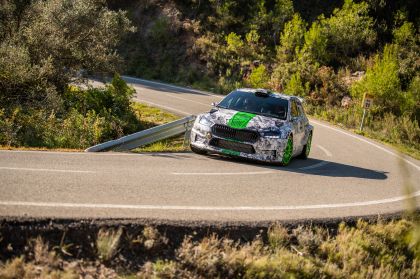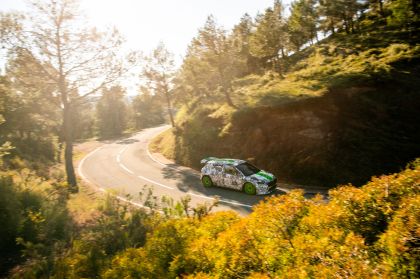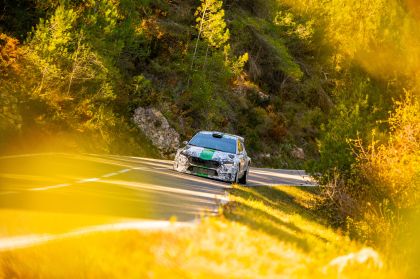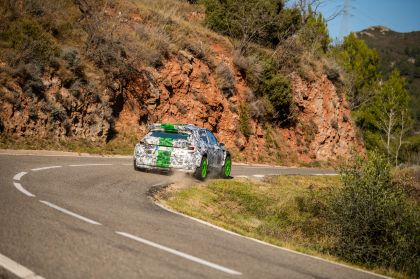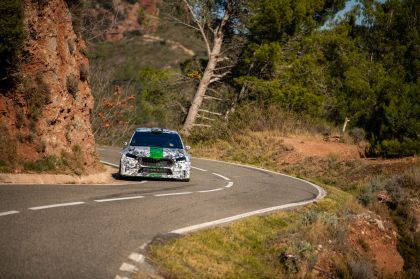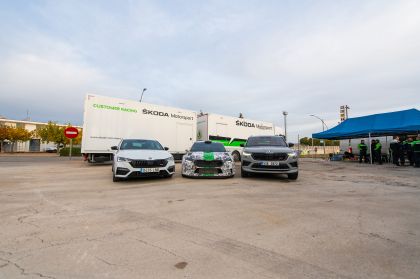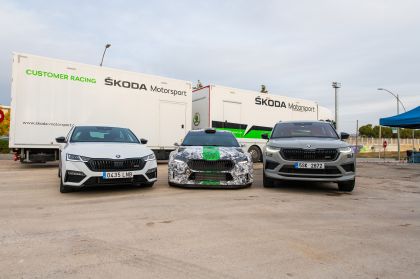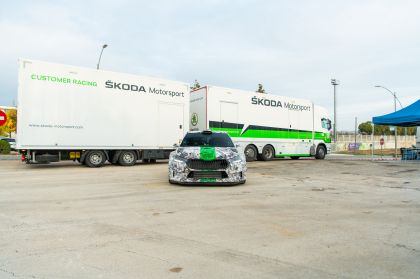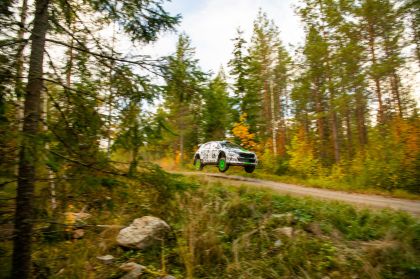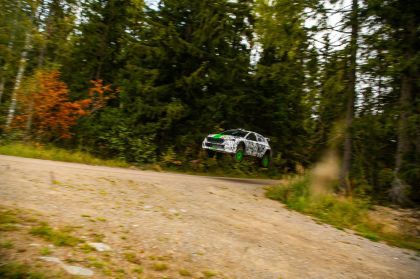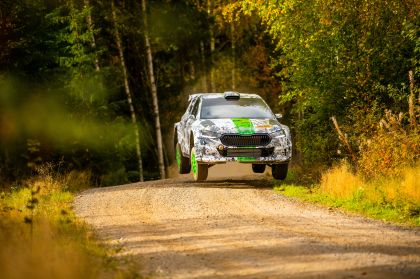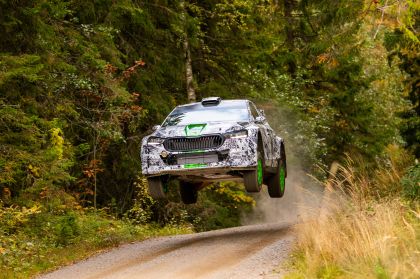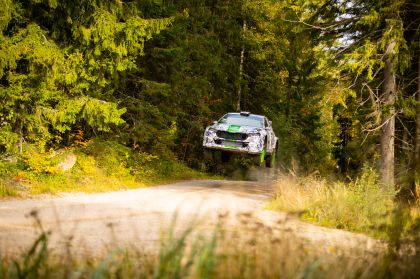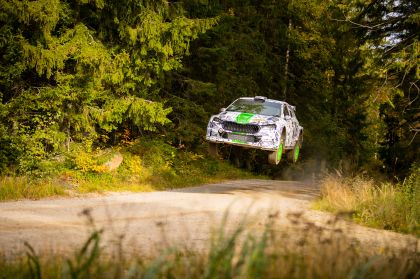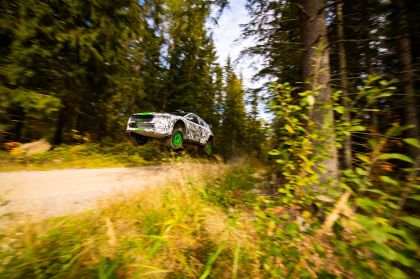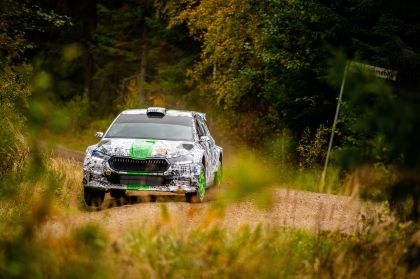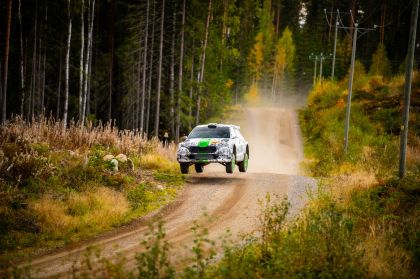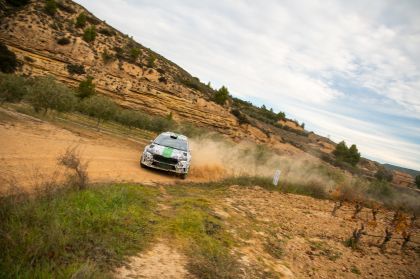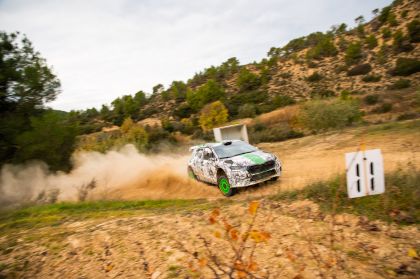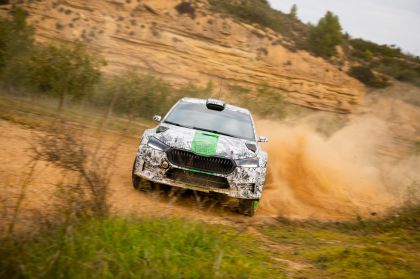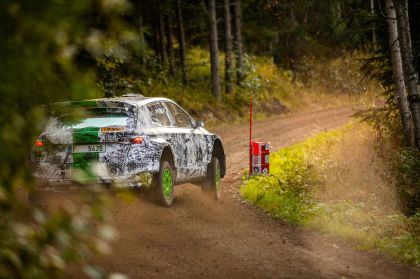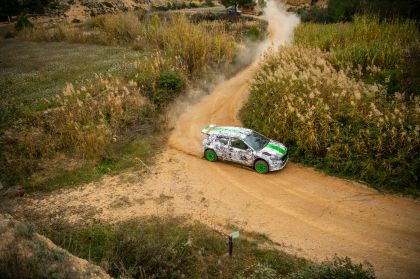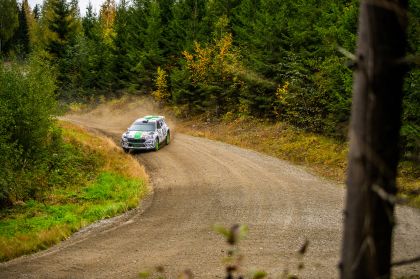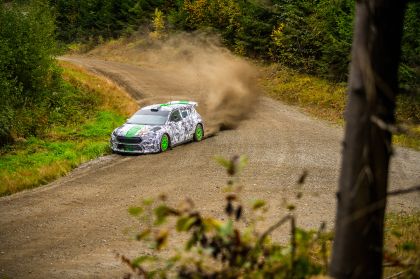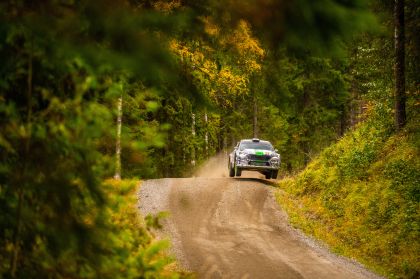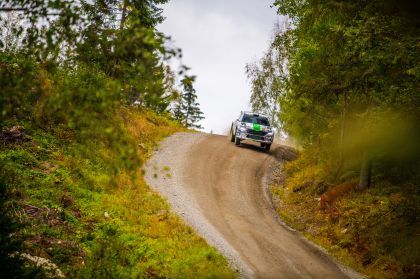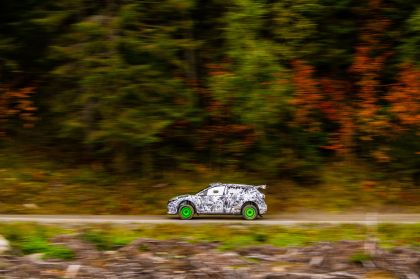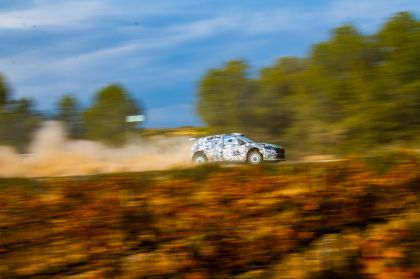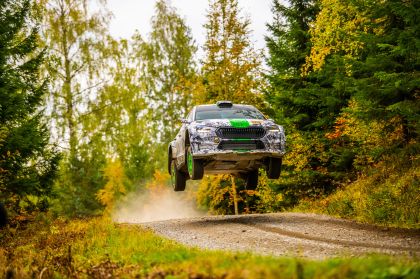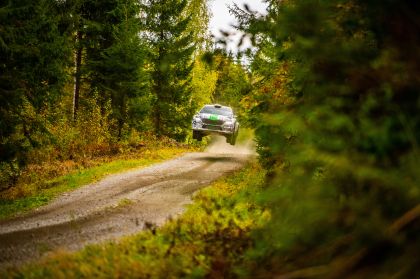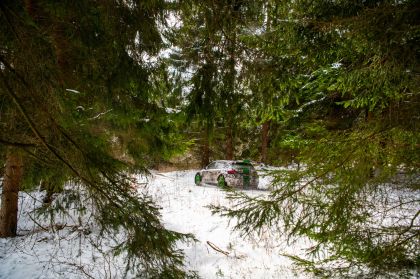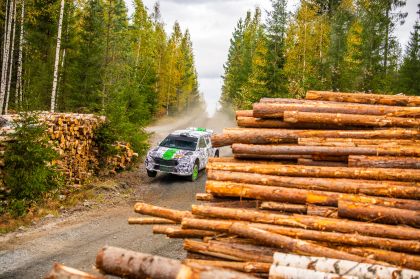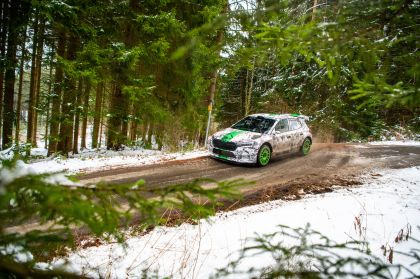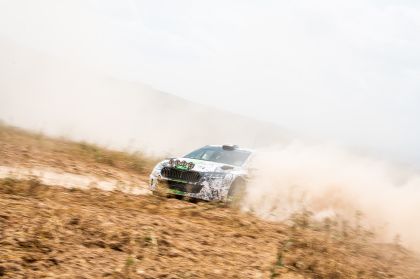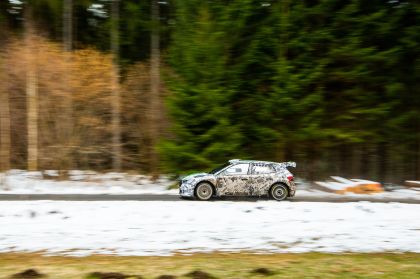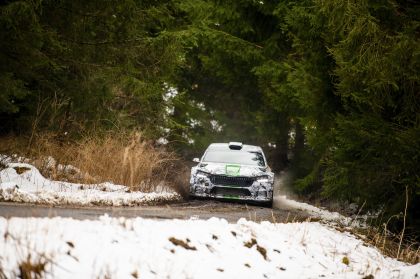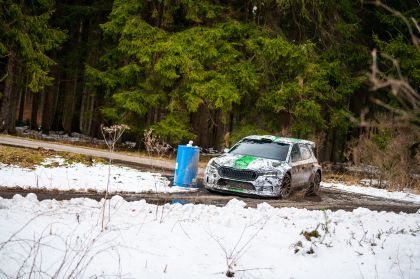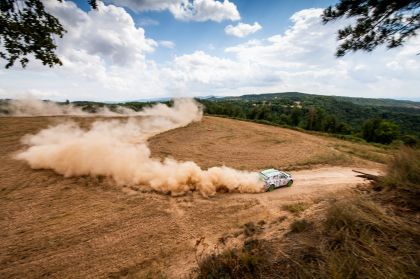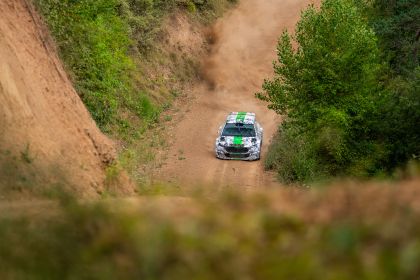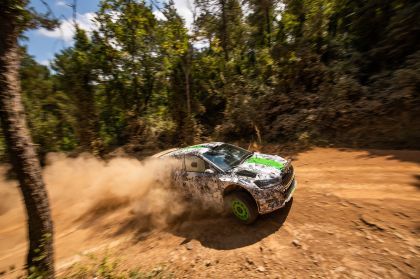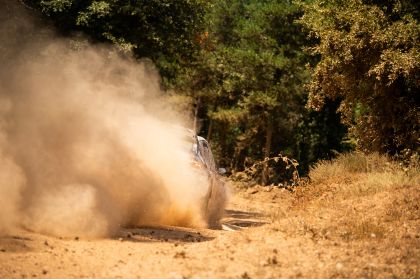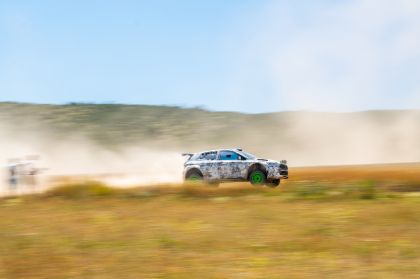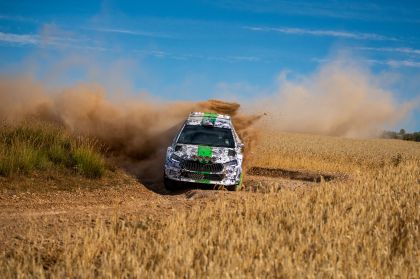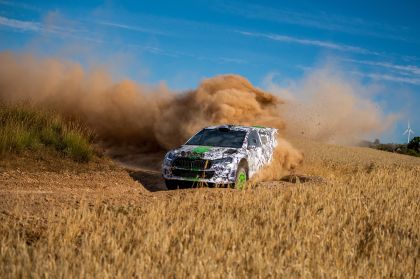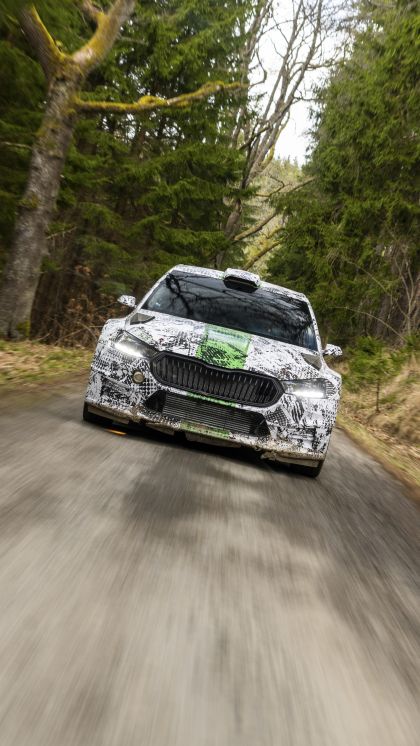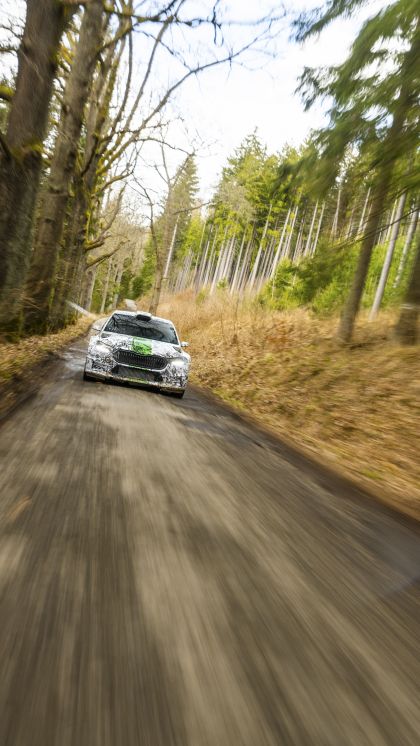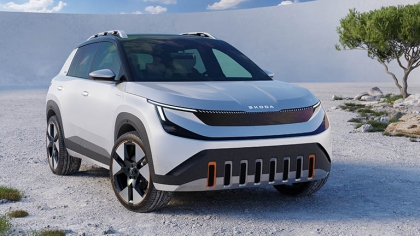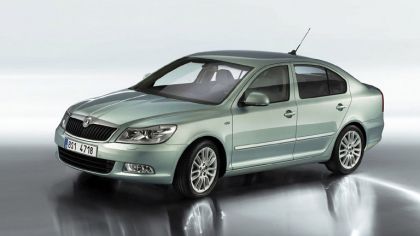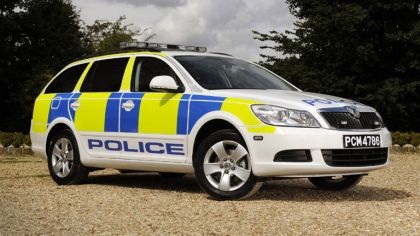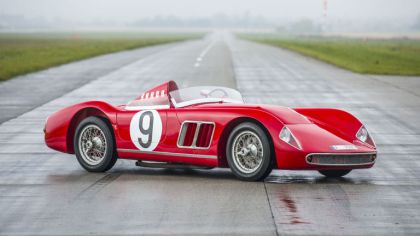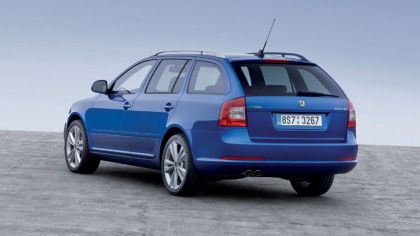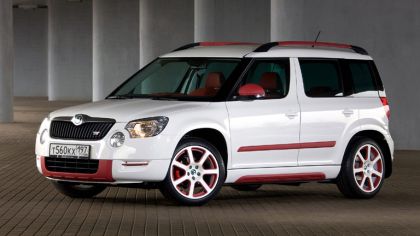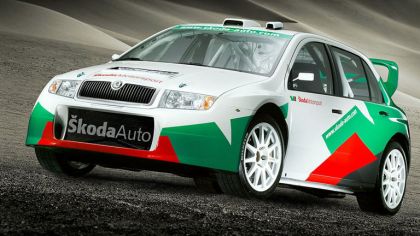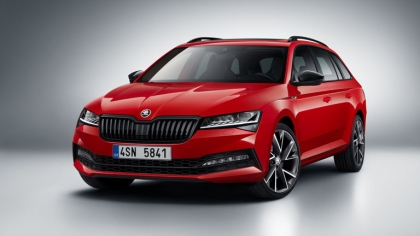Clear the way for the new Škoda Fabia RS Rally2: Škoda Motorsport presents the successor to the Fabia Rally2 evo. The new rally model from Mladá Boleslav is based on the fourth-generation Škoda Fabia and follows on from the most successful Rally2 vehicle of recent years. Škoda Motorsport has developed a new engine for the Fabia RS Rally2, as well as improving the handling, powertrain and electronics and enhancing the safety features for the driver and co-driver. The new Fabia RS Rally2 has demonstrated its capabilities in a demanding test series on asphalt, gravel and ice as well as in a wide range of weather conditions and is ideally equipped to claim victories and titles in the hands of customer teams in the future.
Michal Hrabánek, Head of Škoda Motorsport, says: "Standing still means going backwards, and this is especially true in motorsport. That's why, in developing the new Fabia RS Rally2, we applied the experience we gained from the predecessor model and optimised every detail. The aim was to improve the most successful rally car in the world. I'm proud of the entire Škoda Motorsport team who have pursued this goal with great dedication. I would also like to thank our colleagues in Series Development; the fourth-generation Fabia provided us with a perfect basis for the Fabia RS Rally2."
The all-new Škoda Fabia RS Rally2 is a rally vehicle for the Rally2 category and benefits from the best-in-class aerodynamics and exceptionally stiff bodywork of the production model. Compared to the successful predecessor model, the Škoda Motorsport team have optimised the powertrain in particular, as well as the electronics, safety and handling. The engineers also developed a new 1.6-litre turbocharged engine based on the 2.0 TSI from the EA888 engine series, which is used in the RS models, among others. Škoda's new motorsport paintwork highlights the close ties to the sporty RS series models; the Hyper Green colourway echoes the OCTAVIA vRS and the ENYAQ Coupé iV vRS.
Demanding test series under a range of weather conditions
To prepare the new Škoda Fabia RS Rally2 optimally for action on the rally track, Škoda Motorsport subjected the newcomer to extensive tests on asphalt, gravel and snow for almost a year. This included trials in the Czech Republic, France, Italy, Croatia, Germany, Belgium and Spain, as well as under extreme winter conditions in northern Finland since the summer of 2021.
Technical highlights of the new rally car
Škoda Motorsport has incorporated a host of components optimised for rally use in the new Fabia RS Rally2. A special braking system and a precisely balanced chassis deliver valuable tenths of a second on the track. The roll cage, consisting of 35.8 meters of steel tubing and a specially protected fuel tank, ensures a high level of safety on board. In addition, the electronics and controls meet the exact requirements of the driver and co-driver during a rally.
Some of the components used in rally vehicles differ significantly from their counterparts in production vehicles. Instead of having up to nine airbags and numerous electronic assistance systems like those found in the production Fabia, the new Škoda Fabia RS Rally2 relies purely on mechanics in many aspects. It also features specialised components, such as a roll cage and specially protected fuel tank. Unlike the production Fabia, the rally version only uses sensors for engine management and displaying the brake pressure, steering wheel position and fuel. The sensors merely provide information; in contrast to the production model, they do not perform any control functions. Only the engine control unit uses sensor data to ensure that it functions optimally in all driving modes and various weather conditions.
Different front-axle brake discs for asphalt and gravel tests
In a rally vehicle, the braking system can save valuable tenths of a second in the fight against the clock. The stronger the deceleration, the later the drivers can brake into a bend. In hard braking manoeuvres, the brake discs easily reach temperatures of more than 700 degrees Celsius. To ensure efficient cooling at all times, the Fabia RS Rally2's brake discs are internally ventilated, and an optimised brake cooling system is also available for gravel and asphalt stages. The brake discs for asphalt have a diameter of 355 millimetres at the front and 300 millimetres at the rear, requiring 18-inch wheels with a rim size of 8×18. The brakes for use on gravel measure 300 millimetres at both the front and rear. In this case, 15-inch wheels with a size of 7×15 are used.
Special fuel tank for 100% sustainable petrol or for fossil racing fuel
The Škoda Fabia RS Rally2 has a special fuel tank and shock-resistant rubber in line with the FIA World Automobile Federation's regulations. Its volume is 82.5 litres. A special foam filling prevents fuel from leaking. Additional protection is provided by a Carbon/Kevlar composite cover and an absorbent layer on the underside. Throughout the 2022 season, 100% sustainable petrol will be used in the FIA World Rally Championship (WRC). This is based on modern raw materials and high-purity renewable components. The bio-fuels are derived from biological waste and synthetic e-fuels. These are produced using renewable energies that enable electrolysis from 'green' hydrogen as well as CO2, which is extracted from the air and industrial processes. The 100% renewable petrol is then mixed in a laboratory without any fossil-fuel components.
35.8 metres of steel tubing protect the crew
Škoda Motorsport engineers have developed a roll cage for the new Fabia RS Rally2, which consists of a total of 35.8 metres of high-strength chrome-molybdenum steel tubing and is welded to the chassis during body construction. The side panels and roof are then mounted. This procedure allows for even greater manufacturing precision, as well as a better fit and connection to the body.
Special rally chassis and longer service life of components
The chassis of the Fabia RS Rally2 is also engineered to meet the demands of rallying. Compared to the previous model, the suspension stroke of the dampers is now longer and the MacPherson struts are stiffer. In addition, the designers reduced the friction in the dampers. The longer wheelbase also prompted the development of new suspension kinematics. In addition to the design of the differential, the shift characteristics of the transmission and the durability of various components have also been optimised.
Easy operation using touchpad and steering wheel buttons
The Škoda Fabia RS Rally2's larger main display, which can even play back video information, allows for intuitive operation during a rally. The interior also features a new central control panel with a touch screen and integrated intercom. The driver can access numerous functions directly using buttons on the steering wheel, and the engine start button is also integrated into the steering wheel, where it can be quickly accessed if, for example, the engine stalls after a spin.
Enhanced weight distribution thanks to wider body and longer wheelbase
The chassis, based on the current generation of the Škoda Fabia production model, allowed the engineers to further optimise the rally car's driving characteristics. The Fabia RS Rally2 benefits from the longer wheelbase of the fourth-generation Fabia, making the car quieter while ensuring a more stable rear. Compared to the Škoda Fabia Rally2, the fuel tank has been repositioned and the additional space in the engine compartment has been used for a larger intercooler.
Drive: Newly developed turbo engine, sequential gearbox and all-wheel drive
Škoda Motorsport has developed a new engine for the Fabia RS Rally2 and further optimised the time-proven powertrain. The Fabia RS Rally2's 1.6-litre turbo engine is based on the 2.0 TSI from the EA888 engine series with an output of around 214 kW (289 hp). The maximum 430-Nm torque is distributed across all four wheels via a 5-speed sequential gearbox and two differentials.
The Rally2 regulations of the Fédération Internationale de l'Automobile (FIA) stipulate a 1.6-litre turbo engine based on a production engine for vehicles in this category. When developing the powertrain for the new Škoda Fabia RS Rally2, Škoda Motorsport opted to base it on the 2.0 TSI with an integrated exhaust manifold from the EA888 engine series, which is used in the brand's RS models, among others. Compared to the Fabia Rally2 evo engine, the newly developed four-cylinder features redesigned intake and exhaust ports, optimised pistons and combustion chambers, variable valve timing and a redesigned lubrication system for a significantly enhanced combustion process. The engineers also revised the exhaust system, which has a new turbocharger, and developed an innovative intercooler and cooling circuit with greater cooling capacity. The Fabia RS Rally2 also features new engine management software. The diameter of the air restrictor is 32 millimetres, in line with the FIA's technical regulations for the Rally2 category. This translates to an engine output of around 214 kW (289 hp) and a maximum torque of 430 Nm.
Power transmission via five-speed gearbox and two differentials across all four wheels
The sequential 5-speed transmission, specially designed for rally use, enables the driver to change gears in milliseconds using the gear stick alone. Although the Fabia RS Rally2 has a mechanical clutch, it is only used for starting, parking or when driving slowly. For optimum acceleration on tight, winding rally stages, the Fabia RS Rally2 has a relatively short gear ratio, offering a top speed of around 200 km/h (124mph).
The Fabia RS Rally2's drive concept differs considerably from the production model, not least due to the all-wheel drive. Since the FIA's technical regulations prohibit the use of electronic driving aids to improve traction, only mechanical differential locks on the front and rear axles are allowed; an additional centre differential is not permitted. The separating clutch between the front and rear axles, which is activated when the handbrake is applied, assists when turning into bends on the rally track. The suspension features MacPherson struts on both axles, which are designed to handle extreme loads.
Design and Aerodynamics: Production model offers the perfect basis
The new Škoda Fabia RS Rally2 brings the emotive design language of the fourth-generation Fabia to the international racing tracks. The new rally vehicle benefits from the production model's aerodynamics. Škoda Motorsport developed a highly efficient aerodynamic package based on the Fabia's best-in-class drag coefficient. As a result, the new Fabia RS Rally2 generates almost twice as much downforce as its predecessor. Škoda Motorsport's new Hyper Green paintwork ties in with the sporty vRS series models OCTAVIA vRS and ENYAQ Coupé iV vRS.
The new Fabia RS Rally2 rally model translates the fourth-generation Fabia's design language to the world of motorsport. In addition to the longer roof spoiler with lateral finlets, the rally model also features the production vehicle's flat, sharply contoured front headlights that extend right up to the large, hexagonal Škoda grille. The front and rear lights set visual accents with LED technology. The Rally Fabia also differs from its production counterpart with significantly wider front and rear wings and numerous air outlets on the body. The Hyper Green paintwork references Škoda's vRS family, echoing the OCTAVIA vRS and the ENYAQ Coupé iV vRS.
Downforce values practically doubled
The production version of the Škoda Fabia has the best drag coefficient in its class. The experts at Škoda Motorsport used this perfect foundation to develop the aerodynamics package for the Fabia RS Rally2. Paying meticulous attention to detail, the team managed to almost double the downforce compared to its predecessor - an enormous advantage on the track, as greater downforce facilitates higher cornering speeds. For regulatory reasons, the engineers did not include active aerodynamic parts such as the radiator louvre from the production Fabia.
Lukáš Vojík, an aerodynamics specialist from Technical Development at Škoda AUTO, explains: "Some aerodynamic elements from the production model have also proven their worth in the rally car. With this model, we have paid more attention to the aerodynamics than we did with its predecessor, and we've closely examined every detail. Our goal: Greater downforce for higher cornering speeds and improved handling, while at the same time increasing the vehicle's aerodynamic efficiency."
The air curtains in the front bumpers of the production Fabia guide the airstream closely and aerodynamically over the body and wheels. These are also used in the Fabia RS Rally2. They increase the downforce in combination with new side skirts, which prevent air from flowing under the vehicle from the side. Incorporating a front splitter across the entire lower edge of the front bumper, they ensure optimum aerodynamic efficiency at the front. The splitter also reduces the amount of air flowing under the vehicle, thus ensuring faster airflow and lower pressure under the vehicle, which increases the downforce.
Aerodynamic components typical of a rally car
Several aerodynamic components have been specially developed for the Fabia RS Rally2. In addition to the wider front and rear fenders, the newly developed rear wing increases the downforce. The dimensions and position comply with the regulations for the vehicle's width and height. A small spoiler lip, the so-called Gurney flap, serves as a tear-off edge and also improves the downforce. The airflow over the roof is optimised thanks to a centrally positioned air scoop, which simultaneously supplies fresh air to the cockpit. On a production model, this air intake is located below the windscreen, but on rally cars, this area is very susceptible to dust or water.
Cooling air for engine and brakes
The engine and brakes require more cooling air during racing. This is supplied via special aerodynamic components in the Fabia RS Rally2. Two large, central air inlets at the front allow fresh air for the radiator to be directed to the upper section of the engine compartment and to the turbocharger intercooler, which is positioned lower down. Openings on both sides of the bonnet vent the hot air. In addition, cooling air flows directly onto the front brake callipers via two inlets in the front apron and small ventilation pipes.
Safety: Even better protection for driver and co-driver
The engineers at Škoda Motorsport have introduced numerous measures to protect the driver and co-driver in the Fabia RS Rally2 even better in the event of a collision. One priority was safety in the event of a side impact, and comprehensive analyses of accidents provided important information on this issue.
The measures and equipment to protect the occupants in a rally vehicle differ significantly from those in a production model. The airbags installed in the fourth-generation production Fabia cannot be used in rallying because the sensors and electronic control systems react too sensitively to the high G-forces during asphalt stages, on gravel tracks or in long jumps. The safety concept, therefore, relies on mechanical solutions such as a roll cage and side protection made of carbon fibre and energy-absorbing foam. Six-point harnesses and racing seats with integrated head protection also come into play.
Roll cage made of high-strength chromoly steel
In designing the new model, the engineers at Škoda Motorsport used analysis data from previous rally accidents. The roll cage for the new Fabia RS Rally2, made of 35.8 metres of high-strength chromium-molybdenum steel, consists of longitudinal, transverse and diagonal tubes in the door openings, under the vehicle roof, around the windscreen and behind the seats. The dimensions and material of the safety cell are defined by the Fédération Internationale de l'Automobile's (FIA) technical regulations. Škoda Motorsport goes far beyond these requirements with the new Rally Fabia. The gusset plates that are relevant in the event of a side impact are also more robust than stipulated in the regulations.
Designed with the aid of computer calculations, the roll cage secures the survival space of the driver and co-driver in the event of an accident, even if the bodywork is badly damaged. It also forms an integral part of the chassis, to which it is hand-welded by certified professionals. This significantly increases the torsional rigidity of the body, which is already stiffer thanks to the MQB-A0 platform. Every Fabia RS Rally2 is assembled exclusively at Škoda Motorsport in Mladá Boleslav.
Side impact protection made of carbon fibre, Kevlar and energy-absorbing foam
In a rally car, the driver and front passenger are particularly vulnerable in the event of a side impact. While the production Fabia is protected by a combination of B-pillars, door reinforcements and airbags, the rally version is protected by a roll cage with two door pillars and gusset plates. In addition, the Fabia RS Rally2 has an energy-absorbing structure made of foam between the outer door skin and the interior, as well as door panels made of composite materials. The structure of the composite panels is predefined: Five layers of carbon 280 and one layer of Kevlar 300. The Kevlar layer is closest to the driver and co-driver and protects them from sharp carbon fragments in the event of an accident. The absorbing foam must be approved by the FIA and have the minimum volume specified in the regulations in order to reduce the impact energy and thus the force on the human body. In the Fabia RS Rally2, special racing seats, six-point harnesses and personal equipment, including the mandatory head-and-neck support system (HANS) on the helmet with restraint straps also contribute to effectively mitigating the impact forces. This system protects the crew's heads from sudden and violent movements.
To better distribute the forces generated in a side impact, both body sides of the Fabia RS Rally2 are joined by the seat bracket structure and an additional rail. The door crosses of the roll cage are even more robust and exceed the FIA's requirements. To optimise the strength of the shoulder belt attachment points, the Fabia RS Rally2 has been fitted with an additional cage tube on each side of the vehicle.
Automatic fire extinguishing system on board
The Škoda Fabia RS Rally2's polycarbonate side windows can be easily removed in accordance with FIA regulations. In addition, the on-board safety equipment includes a fire extinguishing system, comprising an automatic system with nozzles in the cockpit and engine compartment and a manual fire extinguisher in the co-driver's footwell. The system can also be activated externally.


